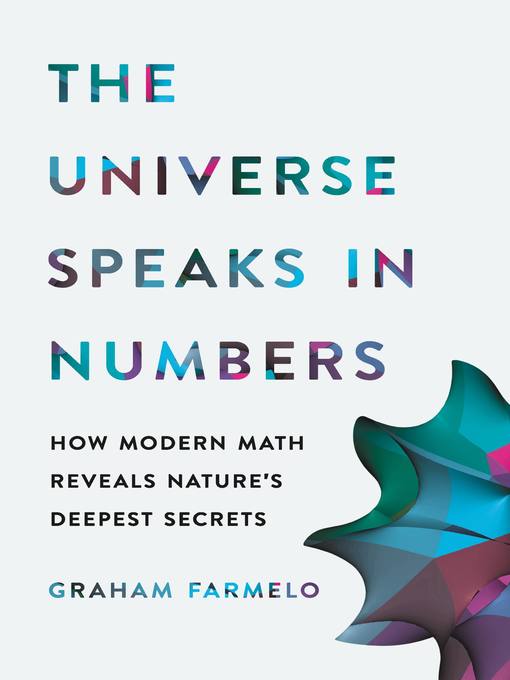
The Universe Speaks in Numbers
How Modern Math Reveals Nature's Deepest Secrets
کتاب های مرتبط
- اطلاعات
- نقد و بررسی
- دیدگاه کاربران
نقد و بررسی

February 15, 2019
Exploring the work of modern theoretical physicists, who are "taking a path that is entirely reasonable and extremely promising."A book on the role of mathematics in scientific discovery that contains little math seems a stretch, but Farmelo (Churchill's Bomb: How the United States Overtook Britain in the First Nuclear Arms Race, 2013, etc.) easily brings it off. It's a cliché that scientists learn by observing and conducting experiments, but the author points out that the two greatest geniuses of modern physical science did neither. Isaac Newton's great discoveries were less universal laws than the use of mathematics to describe them precisely--mathematics so complex that he had to invent an entire field, calculus. In studying gravity, Albert Einstein realized that space was curved rather than flat, and no physicist knew how to describe it. Fortunately, as a purely imaginative phenomenon, mathematicians had explained curved space a few decades earlier, and, with help from a mathematician friend, Einstein made his breakthrough. The idea that mathematicians could help physicists remained a minority view for most of the 20th century, until the flood of new observations diminished and experiments became increasingly expensive. By the 1980s, most physicists had changed their minds, fascinated by new, mathematics-based theories offering the possibility of explaining the nature of matter and finding the holy grail of physics: a way to unite quantum mechanics and general relativity. A downside is that these concepts deal with impossibly small phenomena (string theory) and new subatomic particles that have never been detected (supersymmetry); so far, they make no predictions that experimenters can test. By the 21st century, a growing body of physicists was complaining that this was leading nowhere. For a delightful account of this opposition, read Sabine Hossenfelder's Lost in Math. Farmelo remains a believer, delivering lively biographies of brilliant researchers and their work up to the present, although much will be difficult for readers with no memory of college physics.A thought-provoking look at a fierce, ongoing controversy over the future of theoretical physics.
COPYRIGHT(2019) Kirkus Reviews, ALL RIGHTS RESERVED.

Starred review from April 1, 2019
In 2018, physicist Sabine Hossenfelder attacked string theorists for forgetting their discipline's empirical foundations, so leaving their science lost in math. Through the pen of Farmelo, the empire of mathematicians strikes back. Since the days of Archimedes, Farmelo reminds readers, mathematics has served scientists as more than a summary of empirical data: formulas have guided researchers in their inquiries. Readers see how Newton relied on mathematics when investigating the universal pull of gravity, how Maxwell did the same when linking electricity, light, and magnetism in his dazzling field theories. In Einstein and Dirac, Farmelo identifies two twentieth-century exponents of a mathematical science they fervently believed would enable them to fathom the universe's mysteries through pure thought distilled in beautiful formulas. Einstein and Dirac's contemporaries balked, but Farmelo shows that mathematically minded physicists (especially string theorists) are opening up promising perspectives on cosmic and subatomic enigmas impenetrable to data-shackled empiricists. Though readers hear pure mathematicians grousing about physicists intruding into their discipline, they see these interlopers broadening mathematical horizons while simultaneously freeing science from paralyzing reliance upon the increasingly costly technology required to collect empirical data from black holes and colliding gluons. Mathematics here becomes a brilliant laser beam illuminating the very frontiers of science!(Reprinted with permission of Booklist, copyright 2019, American Library Association.)

























دیدگاه کاربران